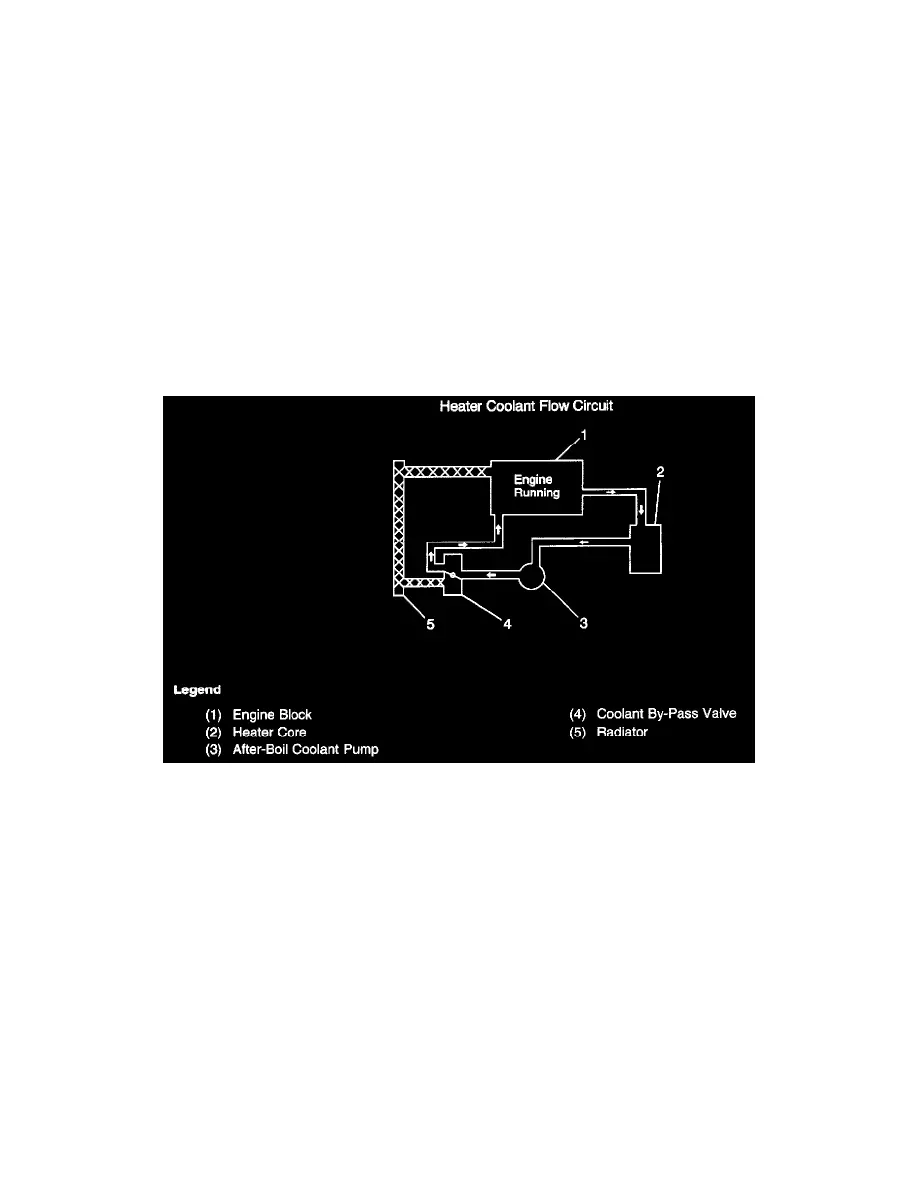CTS V6-3.2L VIN N (2003)

Coolant: Description and Operation
Engine Coolant
Engine coolant is the key element of the heating system. The engine thermostat controls the normal engine operating coolant temperature. Coolant
pumped out of the engine block (1) enters the heater core (2) through the inlet heater hose. The air flowing through the HVAC module absorbs the heat
of the coolant flowing through the heater core.
The coolant then exits the heater core through the heater outlet hose. If the coolant temperature is below 95°C (203°F), the afterboil coolant pump (3)
may be turned on to increase the flow through the heater core.
This pump is located down stream of the heater core in the heater outlet hose. Coolant will flow through this pump even if the pump is not required and
is turned off. Coolant then flows from the after/boil coolant pump to the by-pass valve (4) that directs coolant to the engine block if the engine is running
to improve heater performance or to the radiator (5) if the engine is off and over temperature to prevent overheating.
Engine vacuum from the by-pass solenoid controls the coolant bypass valve positions. When the engine is running, vacuum is supplied to the valve
directing coolant to the engine block. When the engine is off, no vacuum is supplied to the valve directing the coolant to the radiator. If the coolant
bypass valve does not open to the engine block flow position when the engine is started, the vehicle may not reach operating temperature and heater
performance may be affected.
Heater Coolant Flow Circuit
The HVAC control module will command the afterboil/heater coolant pump on for improved performance under the following conditions:
-
The engine is running
-
The engine coolant temperature is below 95°C (203°F)
-
The engine speed is below 4000 RPM
-
The blower motor is ON
-
Selected air temperature requires heat
